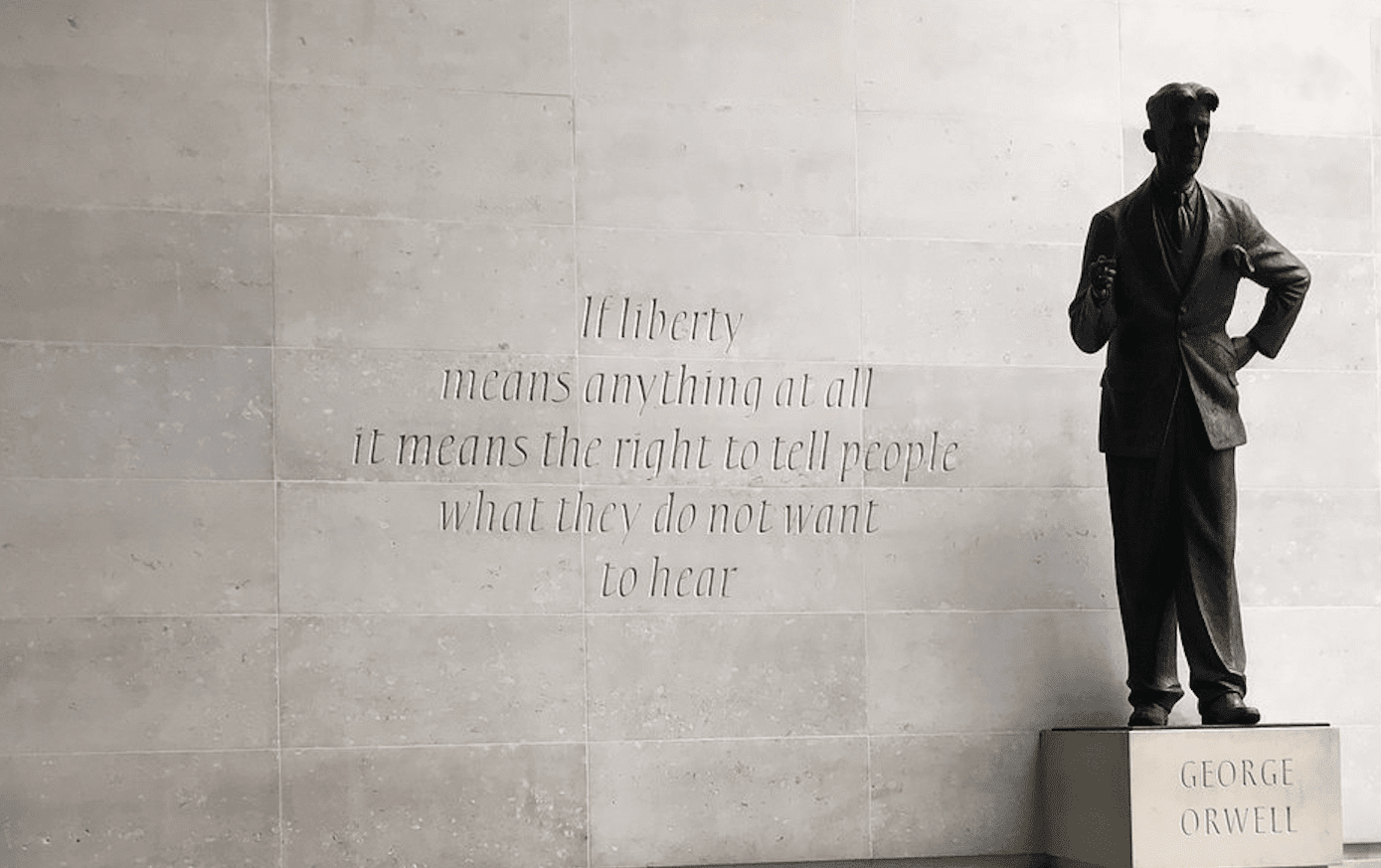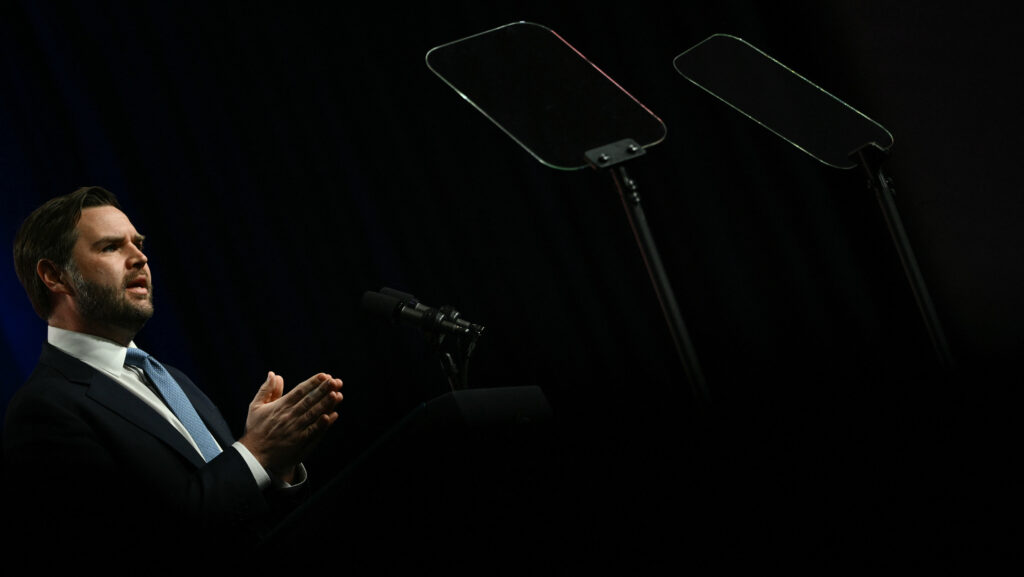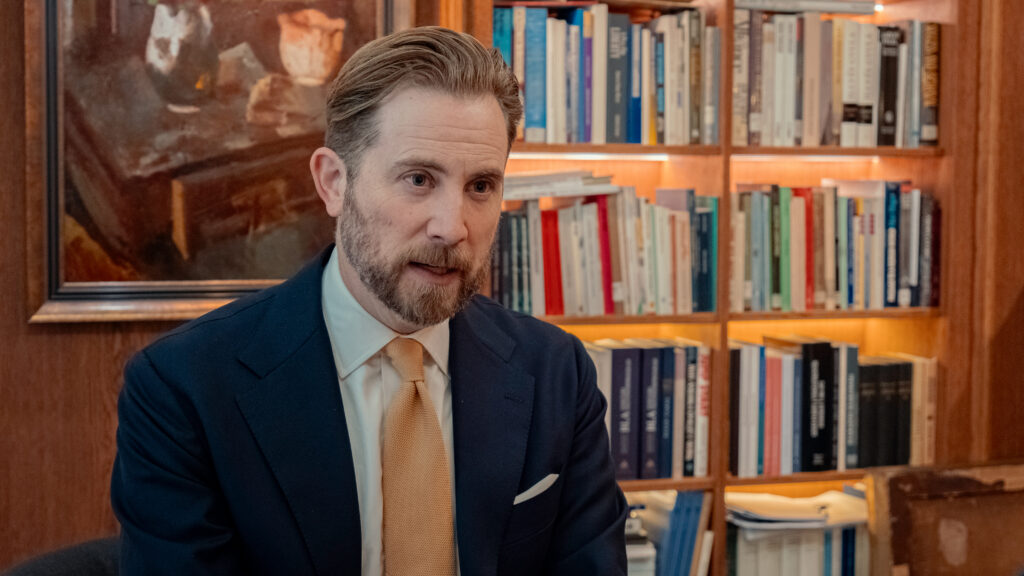The word conservative entered the English language as a loan word in the fourteenth century. The expression conservatyf was borrowed from an Old French word which was in turn derived from the Late Latin term conservare. Bundled along with this historical lineage was a richly layered set of meanings and some consequent puzzles. Conservare meant to keep intact, preserve, or guard. But preserve, guard, or keep intact what? The prefix con- gives us a hint. In Latin con- means together or with.
The word conservative has several component meanings. Conservare connotes something that is preserved with or together. The Latin servare has connotations of ‘following, keeping, watching over, tending and retaining’. A sense of maintaining something is implied by the word. Meanwhile, the related Latin word serō means to ‘to join, link or bind together’ in some kind of a ‘series, row, chain, series, sequence, or succession’. However, these word parts, rich in their own way, do not exhaust the meaning of conservative. To fully grasp the semantics of the word, we have to add to the ideas of keeping and linking in a series the significance of the prefix con-. That prefix has the connotation of something existing in a combination. That seemingly small semantic component ends up doing a lot of work, especially when conservative becomes a key word in the modern political vocabulary.
The explicitly political use of the term conservative takes off in the 1820s. The word had some prior para-political use in the English language. In the fifth edition of A Dictionary of the English Language (1784) Samuel Johnson defined conservative as ‘having the power of opposing diminution or injury’—an interesting definition. The term was related to a ‘conservatory’, a ‘place where a thing is kept’. In his Reflections on the Revolution in France(1790) Edmund Burke talked about ‘the great conservatories and magazines of our rights and liberties’. However, it was not until after the end of the Napoleonic Wars in 1815 that the word conservative began to emerge as a key term in the modern language of politics.
This development began around 1818. It was clearly motivated by a desire not to see a return of Jacobin or Napoleonic-style politics. In the United Kingdom, a group of Pittite Whigs formed a ‘Conservative Association’ in Gloucester in 1818. In the same year, across the Channel, the French anti-Bonapartist, royalist, romantic, and Catholic writer and diplomat Chateaubriand organized a short- lived royalist journal called Le Conservateur (he did this before his turn to liberal romanticism in the 1820s). Numerous aristocratic Whig factions dominated English parliamentary politics in the eighteenth century. The Pittite Whigs or self-described Independent Whigs were the most influential of these. In the 1830s they successfully transitioned from an aristocratic parliamentary faction into an early version of a modern, organized political party. In 1834 the Pittite Whigs officially renamed themselves the Conservative Party. By the 1840s the term conservative had become well- established in political discourse.
The suggestion that the word conservative should be used as the new name for the erstwhile Independent Whigs as they evolved in the age of Robert Peel is conventionally attributed to an anonymous article in theJanuary 1830 edition of the journal Quarterly Review. The article suggested that the ‘New Tory’ party of former Whigs led by Pitt and his successors (Portland, Perceval, and Liverpool) might better be named the Conservative Party. What is striking about the proposal is that ittapped into an ambidexterity long associated with the Independent Whig faction that formed around William Pitt the Younger and his factional successors. These were nominal (‘independent’) Whigs who drew substantial support from Tory members of Parliament. Thus the political conservative, at least in the English-speaking world, emerged in a space of dual allegiance, an ambidextrous space between Whig and Tory. That ambidexterity was not just the product of a transitional moment in British politics. Rather it spoke to something deeper about the nature of what a conservative is.
Timing was important in the evolution of the meaning of the term conservative.
It is no accident that the modern political use of the term takes off directly after the end of the Napoleonic Wars in 1815.The sudden adoption of the word into political discourse focused what had become a broad-based insistence that certain key things be preserved or guaranteed in light of the exhausting years of revolutionary and Bonapartist tumult and upheaval. But what exactly was to be preserved? Rights? Liberties? Royalty? Church? Nation? Was the word conservative simply a generic, all-purpose term directed against the experience of upheaval of any kind? Given the timing of its adoption into the language of politics immediately after the end of the Jacobin and Napoleonic age, it is fair to suppose that the word then strongly implied—as it continues to imply today—the idea of preserving things that are threatened by the destructive forces unleashed by modern revolutions, and by the delusional, splenetic, and unseemly agitations of numerous modern, romanticized political ideologies.
Over the past 250 years the appetite for revolution has recurred in numerous forms. It has been outwardly expressed in movements ranging from the Jacobins to the Maoists and from the Leninists to the Nazis. Inwardly it has been sublimated into numerous kinds of hyperbolic progressive, populist, and radical mentalities. Thus it seems reasonably easy to attribute to the word conservative a solidly negative meaning. It implies a rejection of extremism. This ignores, however, that at times the word has also been associated with a kind of romantic radicalism rooted particularly in the works, dating from the 1790s and early 1800s, of the German romantic philosopher Johann Fichte, and running through the well-known radical-conservative philosophical works of Friedrich Nietzsche and Martin Heidegger, as well as many associated varieties of aggressive nationalism, aristocratic radicalism, and despotic illiberalism. The radical conservative is the mirror image of the radical liberal-socialist, whose intellectual roots extend back to the French philosopher Jean-Jacques Rousseau in the mid-eighteenth century. Philosophical lineages of this type, however, tell us only so much. More important to understanding the difference between the conservative and the radical is their different kinds of imagination.
The conservative imagination looks to happiness and beauty; the radical imagination is enchanted by the romantic sublime. Since the middle of the eighteenth century, the beautiful and the sublime have charted different courses. Beauty is the outlook of someone who sees the world in terms of proportions rather than absolutes, and ratios rather than reasons. This is the worldview of one who supposes that the world advances not through linear progressions but instead through cycles. A person with an imagination attuned to the sublime tends to see the world in exaggerated and pessimistic terms. Their world is a dark place filled with crisis and catastrophe. Redressing this demands dramatic or extreme actions. A Robespierre or a Napoleon is required.
A single word can have many meanings. That is true of the term conservative as much as of any other word. On occasions the word even acquires radical overtones. It absorbs something of the revolutionary impulse that its etymology otherwise resists. Sometimes, likeHumpty Dumpty in Alice in Wonderland, we try and make words mean whatever we want them to mean. However, even though words are poly-semantic, they are not infinitely so. At times we stretch their meaning. On occasions we even invert their meaning. But, at the end of the day, the conservative is not a radical. There are some inversions that produce nonsense rather than common sense.
The idea of the radical conservative is a form of doublethink. It is akin to the slogans of the totalitarian Party in George Orwell’s 1984, slogans such as freedom is slavery or war is peace. The precept of the Party was that truth is the communication of lies, and much is achieved by starvation. For all the greatness of Orwell’s portrayal of totalitarian societies, there is a thread of socialist rationalism in his work. For while we cannot behave truthfully if we tell lies, Orwell’s curiously rationalist insistence that we cannot simultaneously hold two opinions, knowing them to be contradictory yet believing in both of them—that is, that we cannot use logic against logic—is simply not the case. If Orwell were right then there would be no humour, wit, or irony in the world. That is, there would be no imagination in the world, or at least no constructive imagination. Our capacity to mock dictators and parody bumbling democrats would be sorely limited.
The old Pittite Whigs are a good example of the fact that we can simultaneously hold two opinions, knowing them to be contradictory yet believing in both.
The Pittite faction was both Whig and Tory, or in the language of the 1830s, a movement of ‘new Tories’. Democratic politics is littered with examples of persons and groups with these kinds of dual allegiances. So while it is true that the conservative is not a radical, and the idea of the radical conservative is a kind of doublethink, the conservative mind, on the other hand, is ambidextrous, and routinely violates the rationalist prohibition that logic cannot be used against logic. What is the difference between these two cases? Truths are regularly conveyed in stories, myths, allegories, fictions (like 1984), analogies, and metaphors that are not deliberate lies, but that are also not propositional (A is X) truths either. We often express some things most interestingly in terms of other things. Yet there are also plenty of cases of doublethink, as when a political party knowingly tells a lie and claims that it is telling the truth. We have to be able to distinguish between doublethink and dual allegiances. At its heart, the conservative imagination is ambidextrous. It has a breadth of mind such that two opposed logics can be held simultaneously in appealing and constructive ways. As has been observed, the etymology of the word conservative implies that conservatives are persons who keep [servare] something. But what exactly do they keep? The word also implies that a conservative is a person who joins [serō] the present to the lineages of the past by repeating and extending these serially or sequentially. There is some truth in both the propositions about keeping and joining. Yet by themselves they leave out the con- in conservative. The word conservative is not simply a synonym for sequence or maintenance, even though it encapsulates both of those ideas. Rather more subtly, it evokes the way in which the unchangeable persists in and through change—and how change in turn relies on continuity. It is, as G. K. Chesterton understood, a paradox. What is preserved by the conservative is a combination of change and the unchanging. As Edmund Burke, himself an eighteenth-century Rockingham Whig, put it when discussing the French Revolution, ‘a state without the means of some change is without the means of its conservation’. A good society, in his opinion, balances correction and conservation by altering direction while maintaining principle.
The paradox of the conservative is embedded in society in different ways. One of the principle ways this occurs in modern societies is through the processes of equilibria. The best-known example of this is markets. Many contemporary conservatives call themselves free-market conservatives. That is by no means true of all conservatives, but many do. As almost all observers will readily acknowledge, markets are dynamic. They change—not just yearly or across decades, but daily and even hourly. So what is intrinsically conservative about markets? The answer is equilibrium. Markets expand, reach a limit, decline, reach a new limit, and then expand once again—and they repeat this on and on in a cyclical fashion. Markets are collectively dynamic, in the sense that they tend to grow over time, but this long-term growth is a function of equilibria being continuously struck between increases and decreases in buying and selling.
Modern societies that work well are conservative in that they have a strong sense of homeostasis. This is the sense of continually returning to a point of equilibrium. Upsets, changes, drives, and tensions occur along the way. But these are societies that are good at balancing the ups and downs, positives and negatives, and accompanying costs and benefits. In the eighteenth century, the outcome of this process of dynamic equilibrium was called happiness. Happiness is a word that has, broadly speaking, dropped out of political vocabularies. Nonetheless, conservative societies are happy societies in no small part because the humble prefix con- is understood to be an essential part of the idea of being conservative. The word conservative implies not simply that a succession of things is prudently maintained, but also that various chains of things happily exist in combination with one another. The con- in conservative is what gives the conservative mind its imaginative force. Conversely, many things that are tacitly conservative derive from the operation of the imagination. The conservative imagination is a binding and combining force. It is what puts the syn- into every thesis.
There are many kinds of professed conservative. There are market conservatives, social conservatives, fiscal conservatives, liberal conservatives, national conservatives, populist conservatives, libertarian conservatives, traditionalist conservatives, neo-conservatives, natural law conservatives, and natural rights conservatives. Similarly, there are Burkean conservatives, Aristotelian conservatives, Platonic conservatives, Stoic conservatives, Sceptical conservatives, Augustinian conservatives, Calvinist conservatives, Hayekian conservatives, Schumpeterian conservatives, and on and on. A political and intellectual term like conservative is multi-faceted and fluid. Words with this kind of evocative power rarely have a fixed or narrow meaning. Which is why we qualify them. So a conservative becomes a free-market or a moral-integral or a techno-futurist conservative. But can all of these really be conservative? Is that not stretching credulity? Surely there must be ‘true’ conservatives as opposed to ‘false’ or pretend conservatives?
There is an important point of distinction that can be drawn between different kinds of conservative. This distinction paradoxically unites conservatives of many kinds, while separating others. This is the distinction between those who tacitly or intuitively emphasize the con- in conservative and those who tend to ignore it, downplay it, or dismiss it. The American political philosopher and conservative editor Frank Meyer argued for a ‘double allegiance’ to classic virtue and liberal freedom. The propensity of the conservative to ‘fuse’ outwardly contrary things is not an ideological impulse. Indeed, it is not an ‘ism’ of any kind, including ‘conservatism’. Rather it is a disposition, the effect of the natural working of the side of the human imagination that has a proclivity for ‘double allegiances’. Without fuss or contrivance, the conservative imagines things to be a combination of permanence and change. There are many ways of striking the balance between social continuity and dynamism. Different conservative currents and personalities imagine different kinds of syntheses and fusions. Some work better than others. Some succeed brilliantly, others fail miserably. None are perfect. There is no heaven on earth. Human nature and human societies are imperfect.
Conservatives are not the only fusionists.
Their imaginative synthesis of dual allegiances has its own duelling opposite: the imagination of the liberal statists. Both currents of modern thought and politics—conservative and liberal statist—emerged around the same time. Both have mutated, fragmented, and coalesced a great deal over the years. In the nineteenth century, classic liberalism tended to absorb much from the current of socialism that came out of the French Revolution. History repeated when, at the end of the twentieth century, left-liberalism absorbed the remnants of socialism when it collapsed as an independent movement in the 1990s. This coalescence generated in its wake an all-purpose, often hysterical, intensely moralizing, and frequently illiberal form of liberal statism. Socialism, social liberalism, social democracy, progressivism, generic statism, corporate liberalism, social movements, and identitarian movements all merged into an amorphous, churning current.
The kind of fusion envisaged by the liberal statist is sharply different from that of the conservative. Liberal statists typically blend the tendrils of the romantic sublime imagination with a strong and often compulsive appetite for procedure and correctness. On the one hand, their romantic political fantasies frequently violate the constraints of time, space, biology, resources, foresight, and memory. To offset this, liberal statists offer an unsettling combination of rules and romanticism. At the flick of a switch, they will segue from thoughts of outlandish, infinite possibilities to the rigid grinding of microscopic details.
Their worldview swings between thoughts of unhinged freedom and a fascination with claustrophobic regulations. There is no middle way. The sublime monsters of the romantic imagination are melded and often awkwardly crushed together with suffocating safety and security codes. Fantasies of Promethean-style transformative behaviour are spliced with images of a spiritless, no-risk society. The liberal statist fuses a catastrophic imagination filled with sublime terror and darkness with a deep attraction to inert bureaucratic rules and procedures. Liberal statists are fascinated by sublime images of what is forbidding and overwhelming. They respond to these in two ways. One is to demand dramatic and sweeping change. The second is to hide under a sheltering canopy of rigid speech codes and vacuous behavioural protocols. The liberal- statist world-view is riddled with pessimistic predictions of social crises and emergencies. Its solution to these looming predicaments is to swing between dreams of revolution and the institution of ‘rational’ rules that promise an all-encompassing protection from the predicted convulsions. The fusion of Robespierre’s revolution and Napoleon’s bureaucracy is deeply entrenched in the liberal-statist imagination.
In contrast, the conservative fusion—that is, the con- in conservative—is one of grace, irony, humour, wit, and happiness. There are certainly radical conservatives who see the world in dark, sublime terms. Yet there are also numerous regular conservatives who are relaxed, sunny, optimistic, or happy in their outlook. They are drawn to the beauty of the world. Like Pareto, they prefer ratios to rules. Like Aristotle, they look to the happy mean rather than the sublime extreme. With the Pre-Socratics, they can merge opposites. In the company of the Stoics, they are persistent in the things that they can control and they let go of the things they cannot control. On board with the Sceptics, they weigh the costs and benefits, pros and cons of things. They know that every upside contains a downside, and that every downside brings with it some upside. They join Hayek in observing that the more we plan, the greater the number of unplanned pitfalls we encounter. They agree with Schumpeter that when we create new, prosperous industries, old, declining industries will be destroyed. Conservatives feel comfortable, even sanguine, about all this.
They are relaxed about it all because their imagination is naturally attuned to forging dual allegiances. Imaginative doubles give rise to an indubitable and durable sense of happiness. The modern use of the word conservative surfaced in direct response to the disequilibrium, and resulting stress and anguish, of the age of Robespierre and Napoleon. Tacitly it emerged as a philosophy of equilibrium. It said ‘enough’. And it has continued to say ‘enough’ as one romantic revolution has followed another over the past 250 years, and one ‘rational’ social scheme has succeeded another. None of these tumults or schemes have proved any better or more desirable than any of their lamentable predecessors. In the end, the conservative responds impassively to the manias and tantrums of modern life. The conservative acts like a steel column planted deep in the soil as the hurricane swirls around it—a symbol of the equipoise and symmetry that a good society seeks, and the balance of change and stability that it needs.








